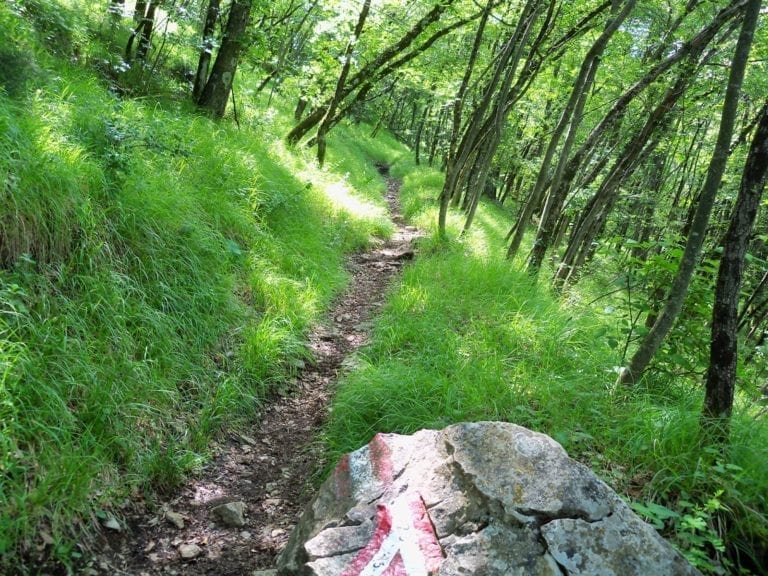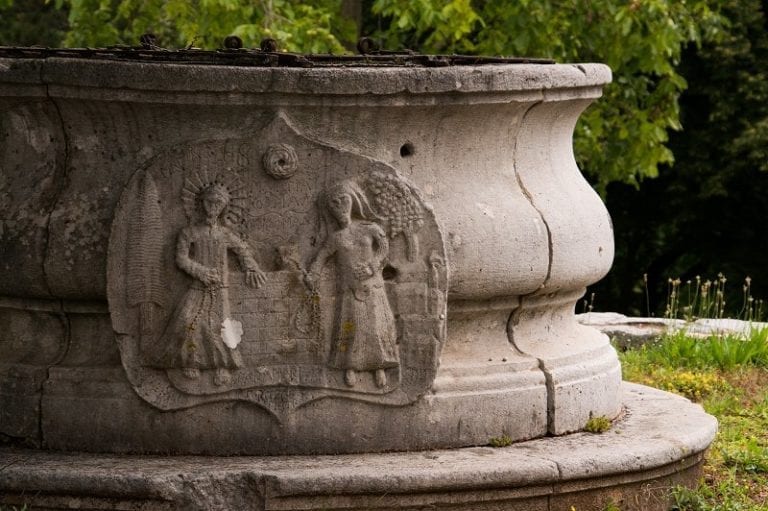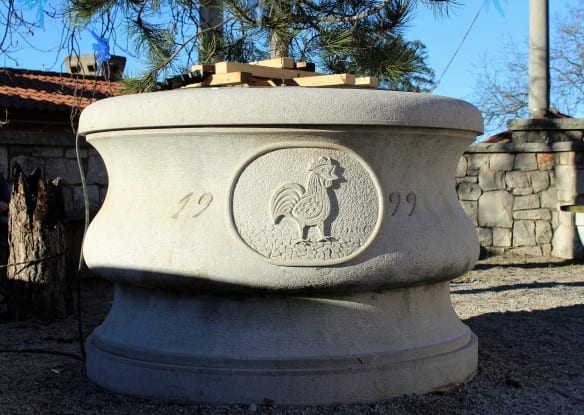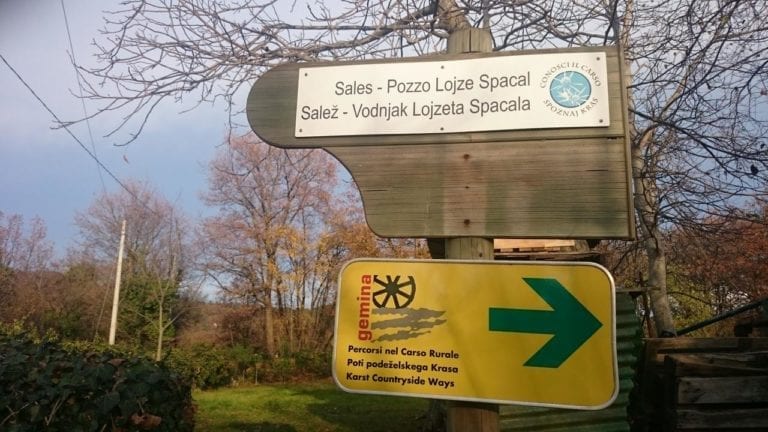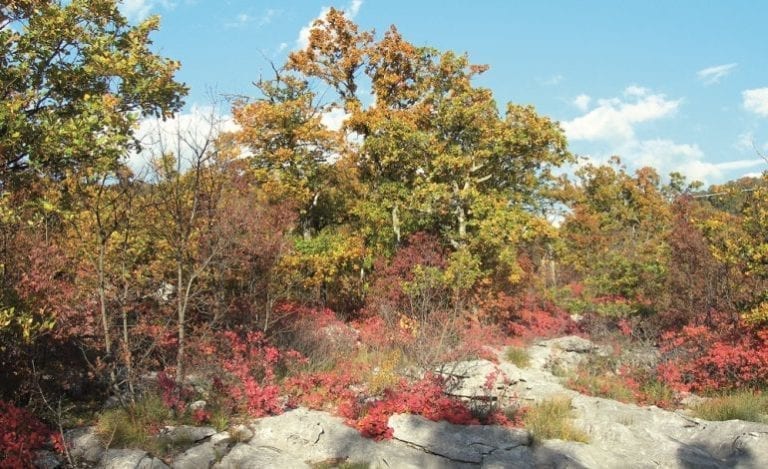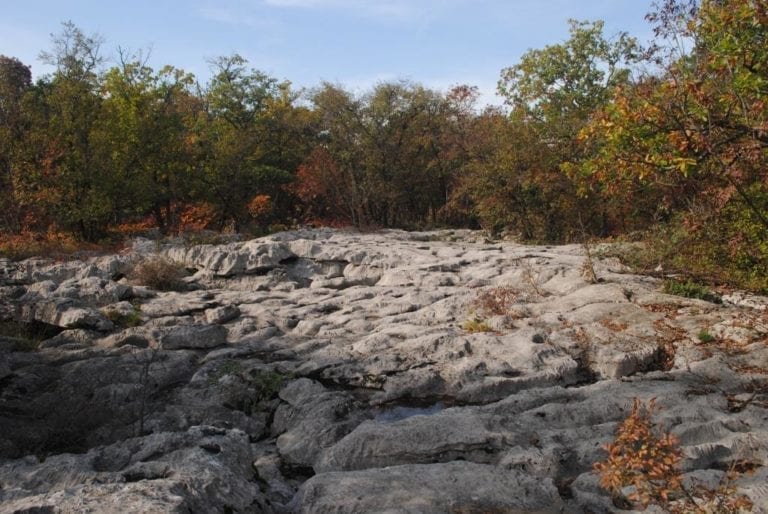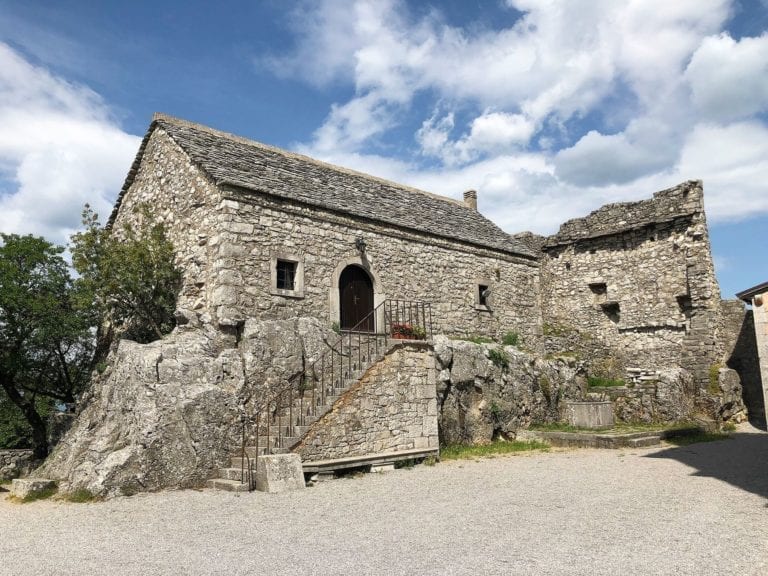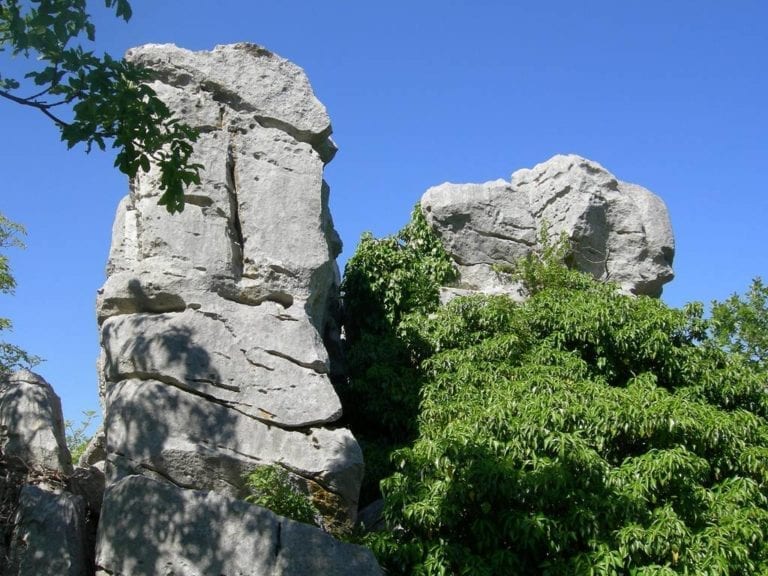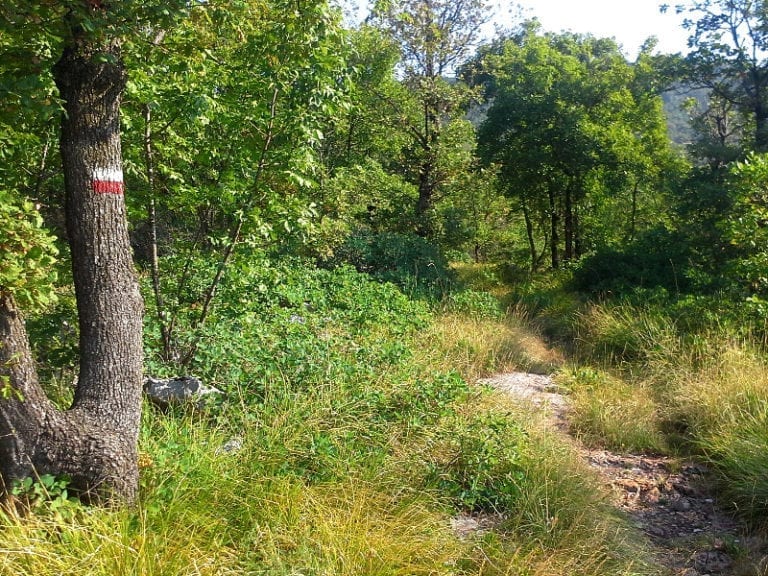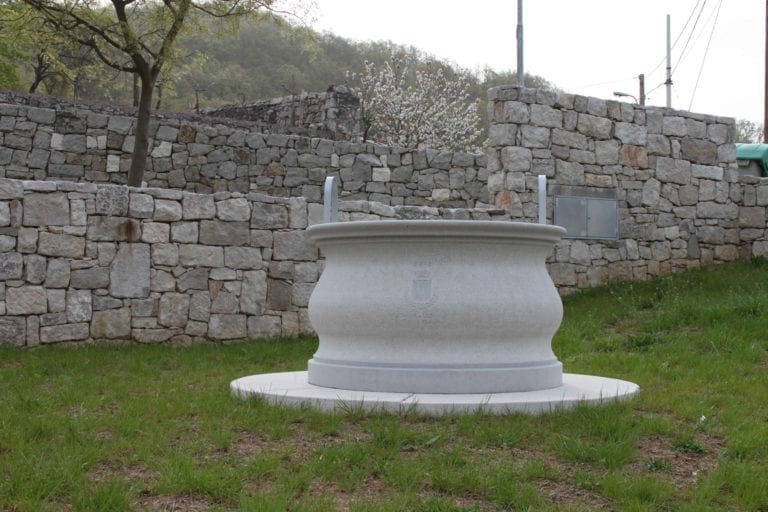Municipality of Sgonico
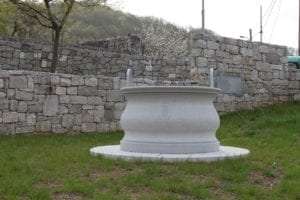
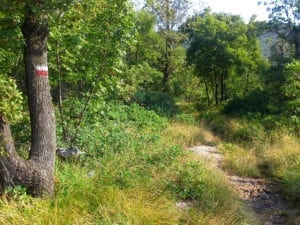 The circular path starts at Sagrado, leads to the top of Mount Lanaro, down to Repen. Passes by the Močilo Pond, the to the Petreviza Quarry, and back to Sagrado, covering about 10 km. It is made up of 3 distinct sections: from Sagrado to the top of Lanaro, from Repen to the Močilo Pond and the Petreviza Quarry, from the open area called P’č to the top of Lanaro.
The path, with almost a 200 m difference in height, partly develops within the Regional Natural Reserve of Mount Lanaro. Initially the path goes through a typical Karst woodland. Later on, it enters woodlands consisting in oaks like common oak and turket oak, and white hornbeams. Near the Peak the path crosses a Karstic dry grassland, where scrub is now developing. There is a wooden observatory on the top, where a 360 degrees panorama can be enjoyed.
The trail leads to the top of Lanaro along the CAI path n° 24, which coincides with a dismissed carriageway built after World War II by Anglo-Americans. Vegetation along the path consists in Karst scrub and Pinus nigra wood, while near the peak the path crosses a Karstic dry grassland, where scrub is now developing.
In Repen, you can visit the Casa Carsica, which is a typical rural house of Karstic Trieste, where an ethnographic museum has been set up.
The circular path starts at Sagrado, leads to the top of Mount Lanaro, down to Repen. Passes by the Močilo Pond, the to the Petreviza Quarry, and back to Sagrado, covering about 10 km. It is made up of 3 distinct sections: from Sagrado to the top of Lanaro, from Repen to the Močilo Pond and the Petreviza Quarry, from the open area called P’č to the top of Lanaro.
The path, with almost a 200 m difference in height, partly develops within the Regional Natural Reserve of Mount Lanaro. Initially the path goes through a typical Karst woodland. Later on, it enters woodlands consisting in oaks like common oak and turket oak, and white hornbeams. Near the Peak the path crosses a Karstic dry grassland, where scrub is now developing. There is a wooden observatory on the top, where a 360 degrees panorama can be enjoyed.
The trail leads to the top of Lanaro along the CAI path n° 24, which coincides with a dismissed carriageway built after World War II by Anglo-Americans. Vegetation along the path consists in Karst scrub and Pinus nigra wood, while near the peak the path crosses a Karstic dry grassland, where scrub is now developing.
In Repen, you can visit the Casa Carsica, which is a typical rural house of Karstic Trieste, where an ethnographic museum has been set up.
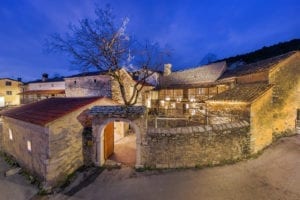 Casa Carsica admittance free offer. From April to November – Sundays and Holidays from 11 am to 12:30 pm aand from 3pm to 5 pm. Closed December to March.
Casa Carsica admittance free offer. From April to November – Sundays and Holidays from 11 am to 12:30 pm aand from 3pm to 5 pm. Closed December to March.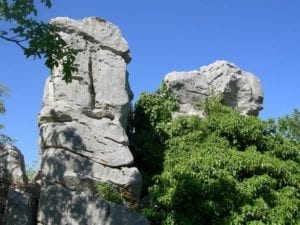
 Then go back down from the Sanctuary to Col village, along a steep path, and after turning at the end of it, you are back to the beginning of the trail.
Then go back down from the Sanctuary to Col village, along a steep path, and after turning at the end of it, you are back to the beginning of the trail.
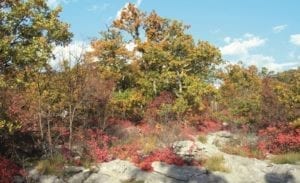 Mount Orsario reminds in its name the presence of bears in the region, in quite recent times. By the first sign a side path begins, leading after few steps to an artificial pond created in a lapies. The main path goes on crossing the scrub and a Karstic dry grassland, partially bushy. Before reaching the top of Mount Orsario it also goes through a mature Pinus nigra wood, and then mixed bush again, with weathered limestone pavement. At the top, near the remains of the barracks of the late 30s, there is a wooden tower. From this point a 360 degrees view can be enjoyed, towards the sea on the one side, and towards the inner land of nearby Slovenia on the other.
Mount Orsario reminds in its name the presence of bears in the region, in quite recent times. By the first sign a side path begins, leading after few steps to an artificial pond created in a lapies. The main path goes on crossing the scrub and a Karstic dry grassland, partially bushy. Before reaching the top of Mount Orsario it also goes through a mature Pinus nigra wood, and then mixed bush again, with weathered limestone pavement. At the top, near the remains of the barracks of the late 30s, there is a wooden tower. From this point a 360 degrees view can be enjoyed, towards the sea on the one side, and towards the inner land of nearby Slovenia on the other.Additional important info
Other touristic sights in the Municipality of Sgonico/Zgonik
Other touristic sights in the Municipality of Monrupino/Repentabor
HOW TO GET TO SGONICO-ZGONIK
What to Do
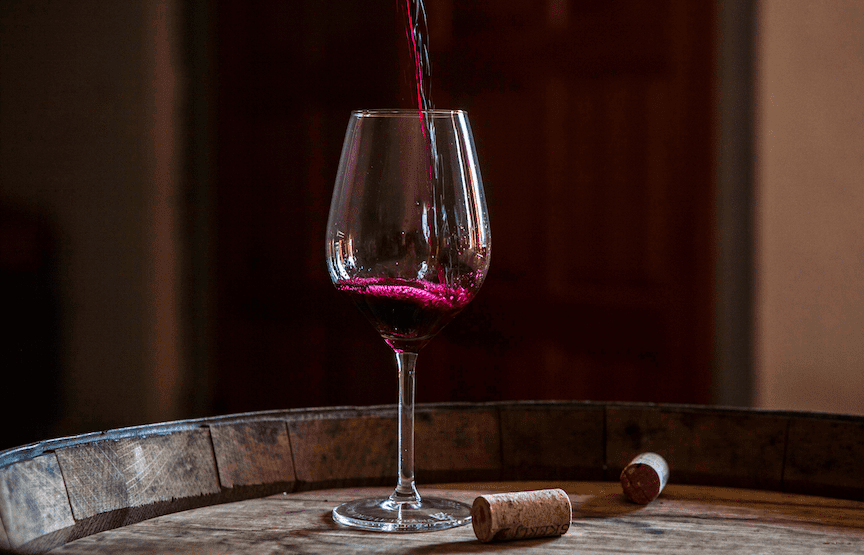
Centro Benessere, Fitness, Medico, Fisioterapico
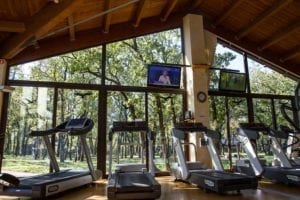
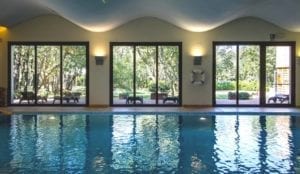
Ristorante Salvia e Rosmarino

Per maggiori informazioni visita il sito web
avalonwellnessmedicalcenter.it/
- Šuc Erika, Borgo Grotta Gigante 18, cell. 339 2019144
- Milič Stanislao, Sgonico 34, tel. 040 229164
- Kocman Matej, Sgonico 59, tel. 040 229211
- Kamence, Contovello 224, cell. 349 4342293
- Milič Damijan, Rupingrande 49, cell. 349 3650761
- Pri Branovih (Škabar Miloš), Rupingrande 45, cell. 339 7142498
- Tavčar Renzo, Rupingrande 42, tel. 040 327135
- Škabar Edoardo, Rupingrande 18, tel. 040 327472
- Gomizel Damijana, Rupingrande 230, cell. 347 4798467
- Rebula, Slivia 6, cell. 347 5686191
- Peric Iztok, Slivia 2, tel. 040 200634
- Gabrovec Ivan, Prepotto 15, cell. 349 3857943
- Škerk, Prepotto 20, tel. 040 200156
- Zidarich, Prepotto 23, tel. 040 201223
- Briščak, Prepotto 19, tel. 040 200782
Salvia e Rosmarino
Borgo Grotta Gigante, 42/b
Tel. 040 202 8094
Križman
Località Rupingrande, 76
Tel. 040 327002
Valeria
Str. per Vienna, 52
Tel. 040 922 0286
Guštin
Località Sgonico, 3/A
Tel. 040 229123
Rino
Str. per Vienna, 11/A,
Tel. 040 213821
Trattoria sociale di Prosecco
SP1, 280, 34010 Prosecco
Tel. 040 225039
What to See
Il parco si trova sul Carso classico ed è un vero e proprio museo all'aperto. Nel suo ambito potete osservare i ben sviluppati carsismi di superficie e di profondità, tra i quali sicuramente spicca l'intreccio delle Grotte di Škocjan (Škocjanske jame) con la sua naturale primordialità.
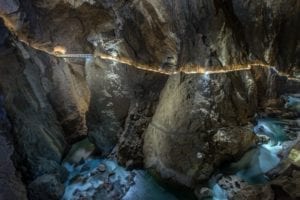
Per maggiori info visitate il sito web
park-skocjanske-jame.si/it/
La grotta di Postumia è la più affascinante al mondo e la grotta turistica più grande d'Europa! In un sistema ipogeo, lungo 24 chilometri, assaporate la magia del mondo sotterraneo e vivete un'eccezionale corsa a bordo del trenino sotterraneo.
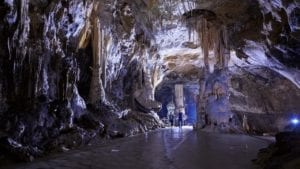
Per maggiori info visitate il sito web
postojnska-jama.eu/it/
A pochi chilometri dalle Grotte di Postumia, il mondo carsico offre un'esperienza indimenticabile nel mondo incantato dei cavalieri. Su una parete verticale di 123 m, da 800 anni è incastonato l'inespugnabile miracolo medievale. Dietro al Castello di grotta più grande al mondo si nasconde una rete di gallerie segrete, che il cavaliere Erasmo di Predjama attraversava per eseguire i suoi saccheggi.
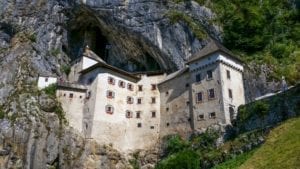
Per maggiori info visitate il sito web
postojnska-jama.eu/it/castello-di-predjama/
Nel cuore del Carso vi potrete immergere in un’atmosfera incantata, dove la natura si mostra in forme e colori di rara bellezza. La Grotta Gigante, con le imponenti dimensioni della sua caverna, vi regalerà un’esperienza unica.
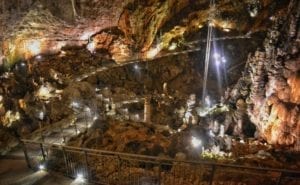
Per maggiori info visitate il sito web
grottagigante.it/
Museo storico e parco del castello di Miramare.
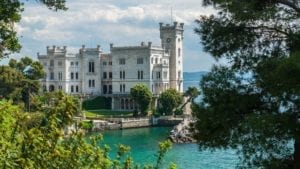
Per maggiori info visitate il sito web miramare.beniculturali.it/
La CASA CARSICA di Repen è un esempio ben conservato della caratteristica e spontanea architettura carsica che all’interno di un cortile chiuso – borjac riunisce le unità abitative e le pertinenze agricole.

Per maggiori info visitate il sito web kraskahisa.com/ita/
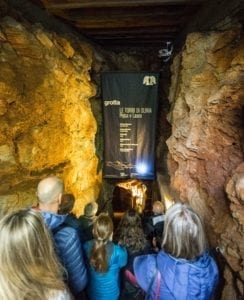
Un percorso sotterraneo tra millenarie torri di pietra. Profonda oltre cento metri, la grotta delle Torri di Slivia è una delle cavità più antiche del Carso Triestino.
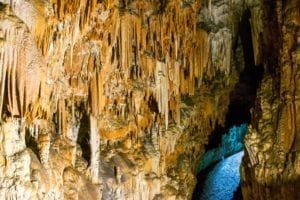
Per maggiori info visitate il sito web
grottatorridislivia.it/
Il Giardino Botanico del Carso
Si trova nel Comune di Sgonico, a 18 km da Trieste, lungo la strada provinciale che collega il paese di Sgonico a quello di Gabrovizza.
Il giardino fu ideato con l’obiettivo di raccogliere, conservare ed illustrare la flora e la vegetazione spontanee del Carso, inserite però in un contesto naturale. Nel giardino sono raccolte specie vegetali autoctone del Carso, collocate nei rispettivi ambienti, che si sviluppano lungo i versanti della dolina che la caratterizza.
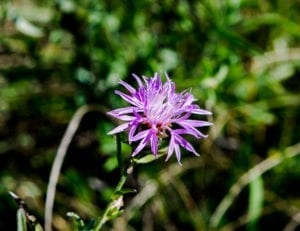
Per maggiori info visitate il sito web
giardinobotanicocarsiana.it/it/
Visita i bunker che facevano parte del sistema difensivo del litorale adriatico tra il 1943 e il 1945 e che furono coinvolti nei combattimenti durante l'inizio dell'occupazione del IX Korpus di Trieste con il Gruppo Escursionisti Triestini.
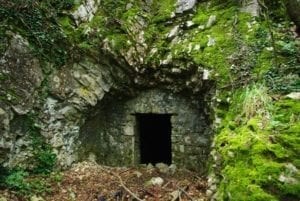
Per maggiori info visitate il sito web
discover-trieste.it/Cose-da-fare/Itinerari/Alla-scoperta-del-bunker-di-Opicina
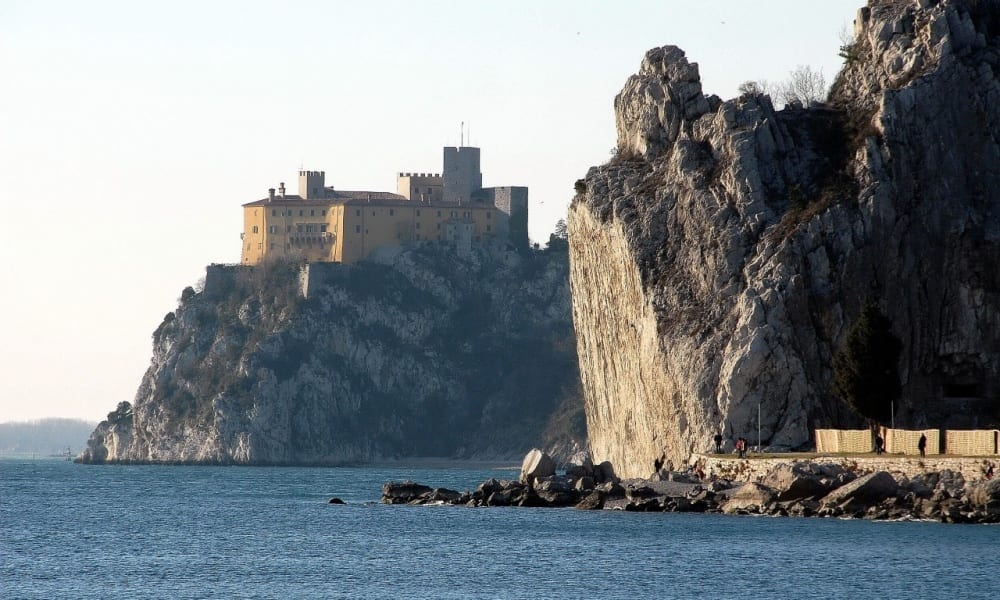
Where to Go
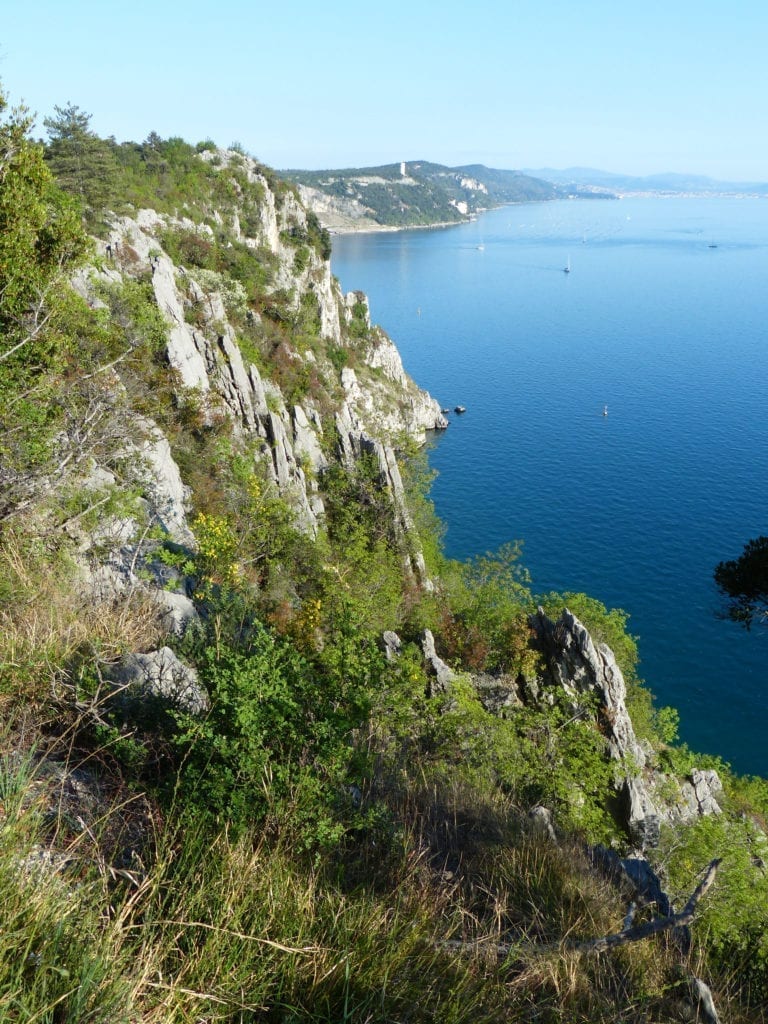
La bellezza della proprietà dell'Equito di Lipica non si trova soltanto in quello che vediamo, ma nelle store scritte dal passato. Appena quando seguiamo i passi della storia, possiamo veramente sentire la grandezza della tradizione ippica.
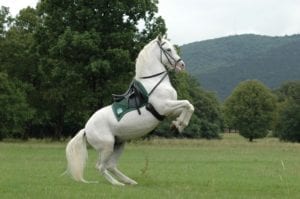
Per maggiori info visitate il sito web
lipica.org/it/
Percorrendo questo sentiero molto facile si possono ammirare alcuni scorci e panorami bellissimi della città e del golfo di Trieste: questa è la strada vicentina o Napoleonica, come la chiamano i triestini.
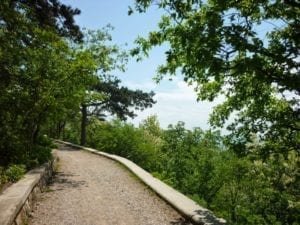
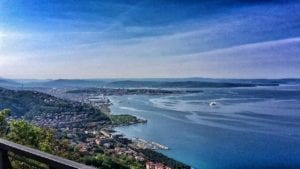
Per maggiori info visitate il sito web
discover-trieste.it/Cose-da-fare/Carso/Strada-Napoleonica
Una della passeggiate più belle e suggestive che si affacciano sul golfo di Trieste è sicuramente quella che, a picco sul mare, collega Sistiana a Duino. Il sentiero prende il nome dal poeta R.M. Rilke che, ospite al Castello di Duino all’inizio del secolo scorso, come già lo era stato Dante prima di lui, ivi compose le sue celeberrime “Elegie Duinesi”.
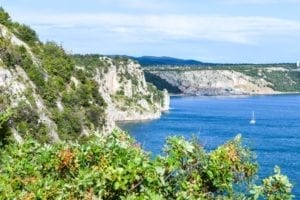
Per maggiori info visitate il sito web
trieste.com/vacanze/itinerari/rilke.html
Dimora privata dei Principi della Torre e Tasso (von Thurn und Taxis), il Castello di Duino è aperto al pubblico dal 1 luglio 2003. Da marzo fino a fine ottobre è aperto tutti i giorni, tranne il martedì. Incantevole location per eventi, il Castello di Duino si trova alle porte di Trieste, immerso nella natura tra storia, cultura e nobiltà.
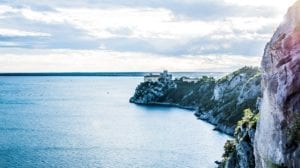
Per maggiori info visitate il sito web
castellodiduino.it/
Percorrere il sentiero che va da Santa Croce ad Aurisina protetti dalla bora è un'esperienza totale.
Tutti i vostri sensi saranno coinvolti. Davanti a voi si spalanca il mare e la vostra vista abbraccerà tutto il Golfo da punta Salvore e Grado: nelle belle giornate, quando la bora ha reso trasparente l'atmosfera, si intravede anche oltre! Tutt'intorno a voi vi circonderanno le incredibili e infinite sfumature del rosso del sommacco, il bianco luccicante della pietra carsica e il verde scuro dei cespugli di ginepro, mentre il profumo di salvia vi accompagnerà lungo tutto il percorso.
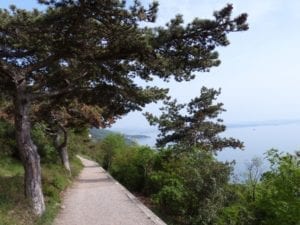
Per maggiori info visitate il sito web
discover-trieste.it/Cose-da-fare/Carso/Sentiero-Weiss-sentiero-salvia
Il Cocusso, noto anche come Concusso (Kokoš, Ozeg, Velika Groblja in sloveno) costituisce la più alta cima del Carso, sull´estremo limite orientale del territorio italiano.
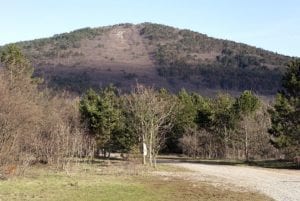
Per maggiori info visitate il sito web
discover-trieste.it/Cose-da-fare/Carso/Monte-Concusso
Ancora oggi è uno dei meglio conservati tra tutti i castellieri che nel periodo protostorico sorgevano sulle alture del Carso triestino.
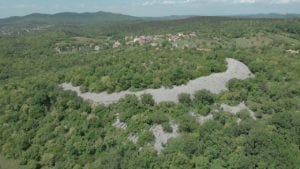
Per maggiori info visitate il sito web
discover-trieste.it/Cose-da-fare/Carso/Castelliere-Slivia
Candide rocce a picco sul mare, i profumi avvolgenti della macchia mediterranea, scorci indimenticabili con cui lo sguardo entra nel blu: scoprili lungo il sentiero Rilke!
Le Falesie di Duino sono formate - come l'intero altipiano carsico - da rocce carbonatiche, nate dalla sedimentazione di gusci di animali sul fondo di un mare poco profondo.
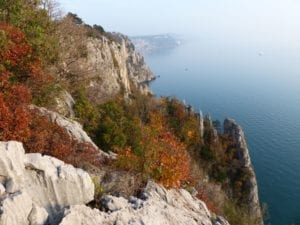
Per maggiori info visitate il sito web
turismofvg.it/Parchi-e-riserve-naturali/Riserva-Naturale-delle-Falesie-di-Duino
Vicino all'abitato di San Giovanni di Duino, o San Giovanni al Timavo, si trovano le risorgive del fiume Timavo.
In questo spazio circondato da maestosi cipressi, pioppi e platani il fiume Timavo "risorge" dopo aver percorso 40 km sottoterra.

Per maggiori info visitate il sito web
discover-trieste.it/Cose-da-fare/Il-Carso/Risorgive-del-Timavo
Divertimento per tutti nel Carso triestino!
Cambia il tuo punto di vista e passeggia tra gli alberi, gioca a 8 metri di altezza o sfida i tuoi limiti.
Il Trieste Adventure Park ti propone diversi percorsi e contesti proprio per soddisfare le aspettative di adulti e bambini. Che tu abbia voglia di lanciarti tra le liane o portare i tuoi figli a giocare nella natura…troverai sempre quello che cerchi. Dipende solo da te.
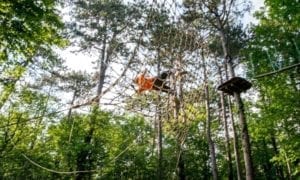
Per maggiori info visitate il sito web
triesteadventurepark.it/


